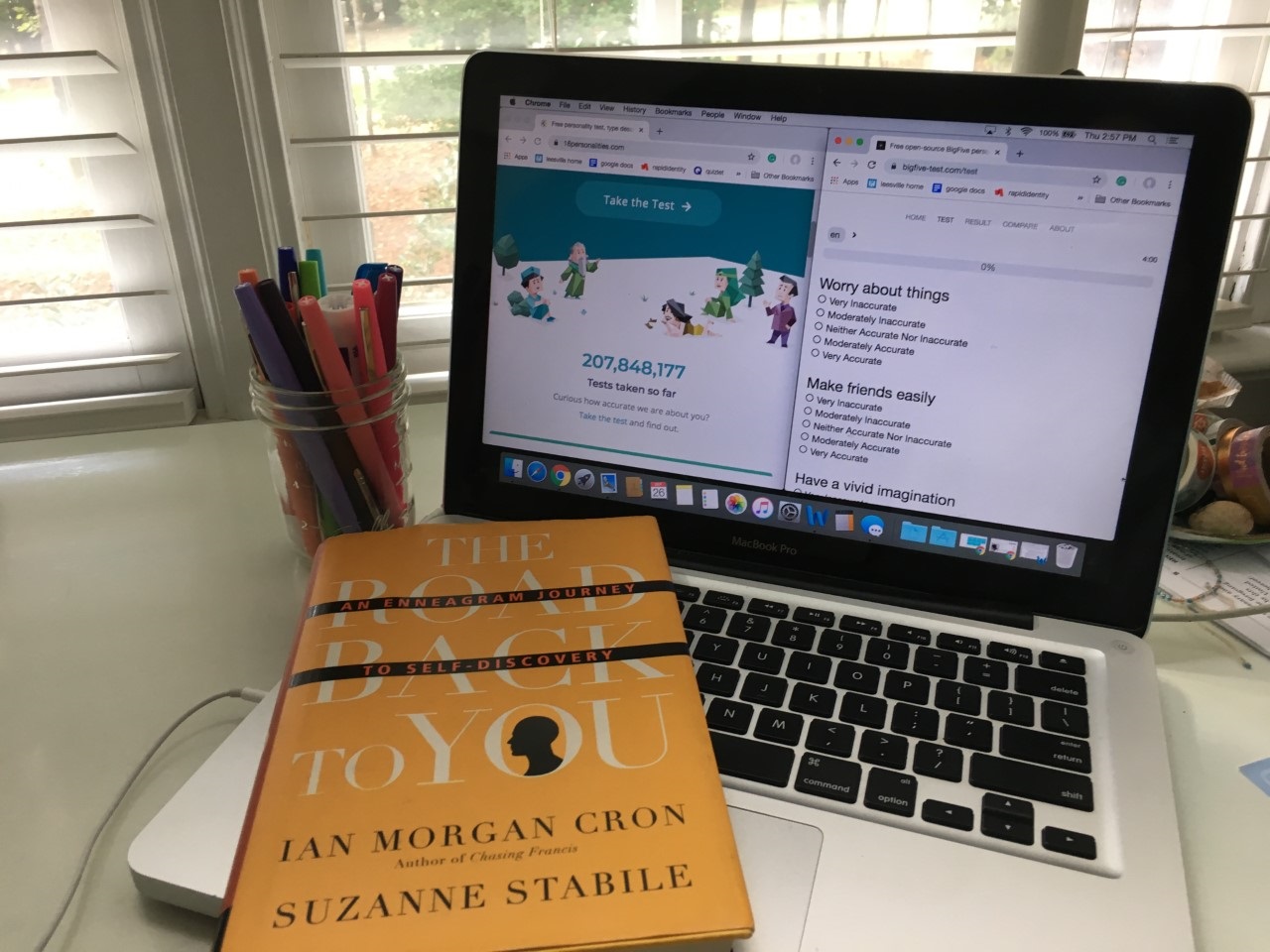Personality tests, whether fun or more scientific, are a wonderful way to discover more about yourself. There are many types–some are taken online while others can be read about.
Who are you? What makes you unique? What are you good at? Personality tests are a way to answer these questions. They help identify strengths and weaknesses. They show us a glance into our innate nature. What makes them feel so appealing? Why do we desire to understand ourselves?
There are hundreds of tests out there that claim the ability to tell you about the depth of your soul, but a few stand out above the others. Here we will examine three of these tests, what they tell you, and how they can help you. The Myers Briggs Type Indicator, the Enneagram and the Big 5 are some of the most popular personality indicators.
- Myers Briggs Type Indicator
The Meyers Briggs, also known as the Jung test, is based on C. G. Jung’s description of personality types. The test is divided into introverted versus extroverted, how you receive information and make decisions, and what type of structure you prefer. There are analysts, diplomats, sentinels, and explorers, each broken down into four more categories.
This test focuses on how people make decisions, on their nature. The goal of the MBTI is to tell you your strengths and weaknesses, hopefully letting you know what career paths you are best suited for. “There’s no personality that’s better than the other,” said Michelle Endahl, one of the AP Psychology teachers at Leesville.
For her, the test is a way for her students to dive deeper into their own personality and those of others.
- Enneagram
The Enneagram divides people into one of nine types. Based on your motivations, it can tell you more about the reason you act certain ways. It focuses on why you do what you do. “The Enneagram helps us to see ourselves at a deeper, more objective level and can be of invaluable assistance on our path to self-knowledge,” said Sarah Cade, a social studies teacher who takes advantage of the Enneagram with her students.
Each number reacts differently to the world — some prefer to take charge of it while others want to make peace. Some want to forget while others seek to learn more. Because of this, numbers interact differently with each other. The Enneagram tells you how people might interact together in relationships, under authority, and around other numbers.
By giving you a wing, or the second-highest number you scored next to yours — for example, 5 wing 6 — the Enneagram recognizes that you are more than one number can tell about you. “Unlike other personality types, you are not either just “this OR this”… the Enneagram recognizes that we are a little bit of everything, even if one type is our dominant trait,” said Cade.
- The Big Five
Openness, conscientiousness, extraversion, agreeableness, and neuroticism — these are the traits the Big Five test measures. It seeks to help you understand others by telling us more about ourselves. With just five traits to focus on, this test goes in-depth to how you act. Openness measures how we face new tasks, conscientiousness tells our thoughtfulness, extraversion measures sociability. Agreeableness is how we interact with others and neuroticism is our emotions. These five traits show a measure between two extremes, and most people fall somewhere in the middle.
The Big Five shows you why you act the way you do based on your relations with others. While the Enneagram and Myers Briggs help show you your motivation and decision making, the Big Five helps you build and figure out relationships. It is based on the social aspects of personality.
These three tests are only a few of many. They are based on self-evaluation, so the results are not fully scientific, only based in science. With that being said, they are not to be discredited. These tests possess the knowledge capable of taking your actions and feelings and telling you a little more about what makes you tick.
Personality tests are invaluable to the way we view ourselves. “I think that [they] can help because knowing ourselves and how we best interact with others can give us agency in a lot of aspects of our lives, including the classroom,” said Cade. As a teacher, personality tests show her more about the students than test scores can. They dive into motivation, decision making, and emotions.
“Whether you take a test or not, the more you are self-aware, the more you know about who you are…it allows [you] to see a little more into [yourself], what others might see in [you],” said Engdahl. For high school students, the journey to knowing who you are is inevitable: personality tests can be one step in that journey.

Hi! My name is Ellie and I am the editor in chief for The Mycenaean. I play soccer at NCFC and go to The Summit Church!

Leave a Reply